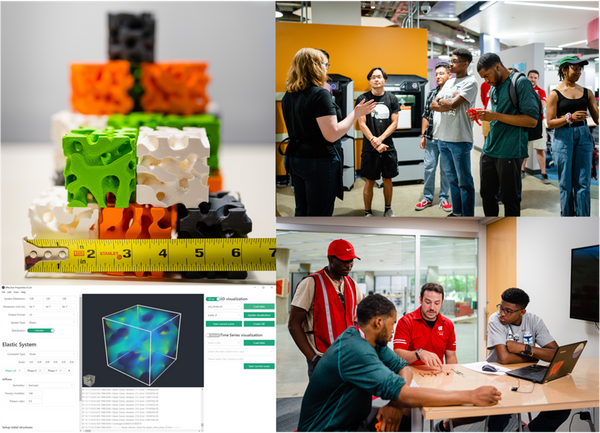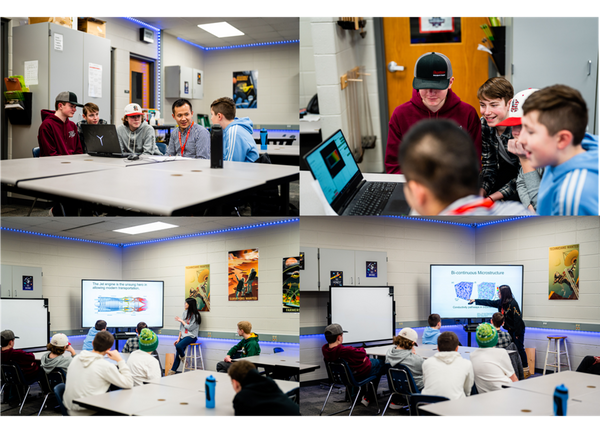Learn how Mu-PRO helps Wisconsin high school students understand 3D printing.
Through our educational license, Mu-PRO enhances students learning experiences by enabling simulation integration into both college and high school science curriculums. We received exceptional feedback from a educational license subscriber at the University of Wisconsin-Madison, who utilizes the Mu-PRO Effective Properties Desktop edition in an outreach activity to assist high school educators in more effectively conveying the principles of 3D printing to their students.
This outreach report is reproduced from Professor Jiamian Hu’s research group web page.
Computational modeling and 3D printing of materials microstructures
Dr. Jiamian Hu’s group collaborated with a Wisconsin secondary school science teacher to showcase the feasibility of printing scaled-up models of 3D bi-continuous microstructures using both industrial-standard 3D printers at the UW Makerspace and portable 3D printers. Utilizing the educational version of the Mu-PRO Effective Properties Desktop version, the teacher calculated the effective Young’s moduli of these microstructures on their laptop.

(Top left) 3D printed microstructures. (Top right) Tour of 3D printing center. (Bottom left) Screenshot of Mu-PRO software. (Bottom right) high-school students exploring microstructure-property relationships by using Mu-PRO to perform effective property simulations on laptops.
Based on these capabilities, Dr. Hu’s group and the teacher organized an event titled “Computational Modeling and 3D Printing of Materials Microstructures” as part of the UW-Madison Precollege Enrichment Opportunity Program for Learning Excellence (PEOPLE) in July 2022. They hosted around 30 Wisconsin high school students from underrepresented backgrounds. Students attended lightning talks on computational materials science and material microstructures, toured the 3D printing facilities at the UW Makerspace, and engaged in hands-on simulations on laptops. Each student received a pre-printed scaled-up model of a 3D bi-continuous microstructure as a memento of the experience.
The event inspired the students, with 14 out of 21 survey respondents considering the event “very interesting”, 4 finding it “extremely interesting”, and 3 deeming it “somewhat interesting”. Notably, one student inquired in the anonymous post-program survey:
I wonder what the microstructure of a star or black hole would look like and how long will it take to calculate stress placed on a certain part of it?
Another student commented:
I realized how beneficial the software system is.
Classroom visit at Mount Horeb Middle school
Dr. Hu, along with graduate students Minyi Dai and Mojue Zhang, visited Mount Horeb Middle school to observe the delivery of a classroom module focused on materials microstructures. They engaged with students by demonstrating simulations of effective elastic properties of materials microstructures using the Mu-PRO software. Additionally, Minyi and Mojue delivered brief talks on computational materials science and materials microstructures topics, providing insights into the field for the students.

(Top left) Dr. Jiamian Hu engaging in discussions with students; (Top right) Students utilizing Mu-PRO software to compute effective properties of materials; Graduate student Minyi Dai (bottom left) and Mojue Zhang (bottom right) presenting topics on computational materials science and materials microstructures.
In their exit tickets, students were asked to list three things they learned from the class. They shared a variety of engaging insights, such as:
Simulations help detect where stress is. Modeling/simulations are fun. We’re the first middle schoolers to use Mu-PRO. Microstructures are small. Strain is how much something stretches. Planes need special materials. Super computers to run complex simulations. Microstructures can look like cheese. New materials help us.